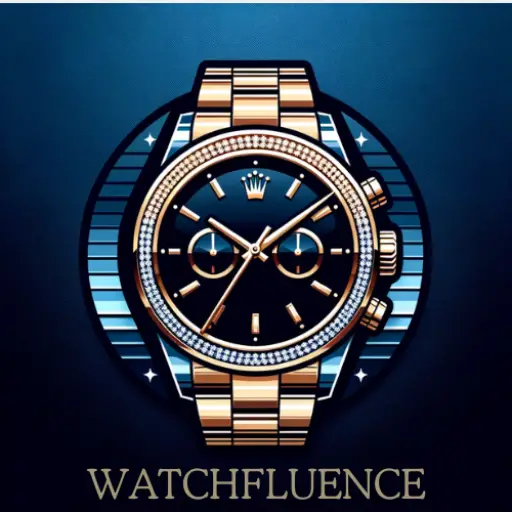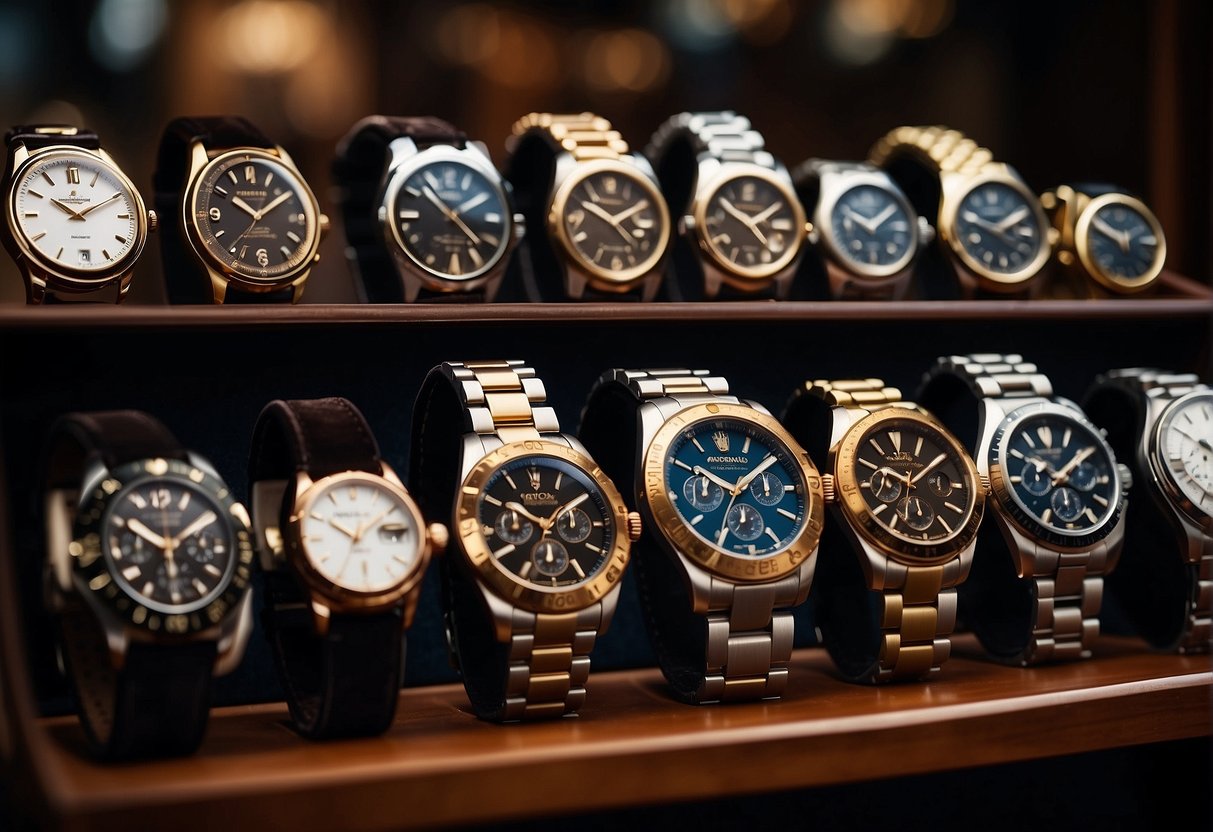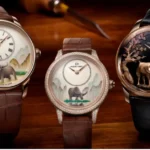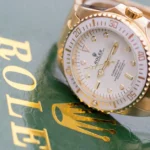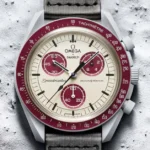Mechanical watch enthusiasts often share a deep appreciation for the artistry and engineering that go into creating these timeless pieces. Unlike their quartz counterparts, which rely on batteries and electronic circuitry, mechanical watch brands boast intricate clockwork mechanisms that have been perfected over centuries. We marvel at the meticulous craftsmanship that enables a mechanical watch to measure time using springs, gears, and a sequence of intricate movements. These fascinating timepieces represent a harmony of tradition and precision that continues to captivate collectors and style connoisseurs alike.
History and Evolution of Mechanical Watches
As we delve into the intricacies of mechanical watches, we find a rich tapestry woven from centuries of innovation—from the early use of springs and escapement mechanisms to the quartz revolution and the subsequent resurgence of mechanical timepieces as luxury objects.
From Springs to Escapement
Mechanical watches owe their operation to a series of small, yet incredibly precise components. At the heart of a mechanical watch lies the mainspring, a tightly wound coil that releases energy in a controlled manner. This energy is then transferred through a series of gears to the escapement, which divides time into equal, measurable parts. The balance wheel, working in conjunction with the escapement, oscillates back and forth at a constant rate, regulating the flow of time.
In terms of variety, mechanical watches come in two main types: automatic and manual, also known as hand-wound watches. Automatic, or self-winding watches, harness energy from the wearer’s wrist motion to wind the mainspring, while manual watches require regular winding by hand.
Rise of Quartz and the Mechanical Renaissance
The ascendance of quartz watches in the 1970s marked a pivotal moment in watchmaking history. Quartz timepieces, powered by battery and regulated by the oscillations of a quartz crystal, were more accurate and required less maintenance than their mechanical counterparts. The convenience and affordability of quartz technology led to declining sales of mechanical watches, pushing some traditional manufacturers to the brink of extinction.
However, the late 20th century witnessed a mechanical renaissance as luxury watches surged in popularity. Afficionados and collectors began to appreciate the craftsmanship and artistry of mechanical watchmaking. Brands such as Blancpain, once dormant, were revived to cater to this renewed demand for high-quality mechanical movements. The luxury marketblossomed, focusing on the intricate design and prestige of owning a piece of horological history, often showcased through features like a sapphire crystal case back.
Understanding Mechanical Movements
In the world of horology, mechanical movements stand as timekeeping’s heart, revered for their intricate craftsmanship and enduring design. We witness a symphony of meticulously arranged components working in harmony to translate time’s passage into motion.
Manual Winding Mechanisms
Manual winding mechanisms embody the traditional essence of watchmaking. To power these watches, we employ a mainspring; a coiled wire of special metal that stores energy as it is wound by hand. The energy from the mainspring is transferred through a series of gears to the escapement, which meters out this energy in controlled portions to the balance wheel, oscillating at a constant rate. This coordinated dance of parts results in the movement of the watch’s hands. Winding intervals for these types of movements depend on the power reserve, which can last between 24 to 72 hours on most models.
Automatic Movements Explained
Automatic movements, often referred to as self-winding, harness the wearer’s natural wrist motion to wind the mainspring. This is achieved via a rotor, a semi-circular weight that pivots on its axis through the movement of our arms. As it rotates, it winds the mainspring, ensuring that the watch stays powered as long as it’s worn regularly. The convenience offered by automatic movements is one of continuous operation; if worn every day, we do not need to manually wind these watches. It’s important to note that while automatic movements offer the practicality of not requiring daily hand-winding, they can benefit from the use of a watch winder when not worn to maintain accuracy.
Selecting a Mechanical Watch

When considering the acquisition of a mechanical watch, attention to detail in quality and features—such as power reserve and water resistance—is essential, minding your budget is equally important, whether you’re a seasoned watch collector or a first-time buyer.
Assessing Quality and Features
Mechanical watches boast an array of features that cater to different lifestyles and preferences. A dive watch like the Dan Henry 1970 Automatic Diver, for example, emphasizes water resistance and luminous markers for readability underwater. Case material, ranging from durable stainless steel to lightweight titanium, affects a watch’s feel and longevity. The size of the case should complement the wearer’s wrist, ensuring comfort and style. For an everyday watch, features like a GMT function for tracking multiple time zones or a sapphire crystal for scratch resistance can enhance usability. The Orient Tristar is a commendable option in this domain. Additionally, the movement’s type, whether an automatic like the Tissot PRX Powermatic 80 or a hand-wound mechanism found in watches like the Vostok Amphibia, determines the watch’s convenience and maintenance needs.
Price Considerations for Every Budget
Our price range can heavily influence our choices in mechanical watches. For those looking at affordable mechanical watches, options like the Timex Marlin Hand Wound or the Seiko 5 series offer reliability without the luxury price tag. On the other end, collecting prestigious pieces like a titanium-cased Citizen NJ0100 Automatic often requires a higher investment. It’s vital to juxtapose the cost with the watch’s features, construction quality, and brand heritage. Collectors may gravitate towards investment pieces with fine craftsmanship from brands like Tissot or Hamilton, while newcomers might opt for an Orient Kamasu or Bulova Hack Watch as a robust entry point. No matter the budget, there are mechanical watches that provide both quality and value.
Iconic Models and Brands

In the realm of horology, certain watch models stand the test of time to represent their brands, becoming emblematic of both tradition and innovation. We’ll explore these iconic models and their manufacturers, tracing the legacy of heritage brands and examining modern trends alongside emerging microbrands in the watchmaking industry.
Heritage Brands and Their Signature Watches
- Patek Philippe: Known for creating some of the most sophisticated timepieces, Patek Philippe’s legacy includes the Calatrava, renowned for its sleek design and pure lines.
- Rolex: The Submariner is arguably their most recognized model, embodying the brand’s pioneering spirit in diving watches.
- Omega: With the Speedmaster, known as the “Moonwatch,” Omega solidified its place in horological and space exploration history.
- Longines: The brand has established itself with elegant designs as seen in their Heritage Collection.
- Hamilton: The Khaki Field series exhibits military heritage and rugged reliability.
- Seiko: Their affordable quality is captured in the Seiko 5 SNK series, offering unique versatility.
- Tissot: Models like the Tissot PRX Powermatic 80 showcase both Swiss precision and contemporaneous aesthetic.
Modern Innovations and Emerging Microbrands
- Smartwatch Integration: Some brands have adapted to the digital age with the smartwatch, which incorporates digital features into traditional watch forms, widely available on platforms like Amazon.
- Material Use: Watchmakers are now frequently using materials such as ceramic and titanium, known for their durability and lightweight properties, in contemporary models.
- Microbrands: Companies like Dan Henry and their 1970 Automatic Diver are creating waves with their quality and novel designs.
- Seagull 1963: As a notable piece from the Chinese manufacturer Seagull, this watch represents the rich history and resurgence in popularity of the brand.
- Innovative Movements: Timepieces like the Swatch Sistem51 demonstrate groundbreaking mechanical movement assembly, offering affordable mechanical watches.
FAQ-Mechanical Watch Brands
What defines a mechanical watch and how is it different from other types of watches?
A mechanical watch is powered by a complex system of springs and gears, operating without the need for a battery. Unlike quartz watches, which use battery-powered electronic circuits and crystal oscillation, mechanical watches require manual winding or have an automatic winding mechanism powered by the wearer’s movements. This traditional craft is highly valued for its precision engineering and the aesthetic appeal of its intricate movements.
What are some top mechanical watch brands known for their quality and craftsmanship?
Some of the top mechanical watch brands include Rolex, Omega, Patek Philippe, and Audemars Piguet. These brands are renowned for their dedication to quality, durability, and the fine art of watchmaking. Each offers a range of styles, from classic and understated to bold and innovative, with movements that showcase the pinnacle of mechanical precision.
How should I care for and maintain a mechanical watch to ensure its longevity?
To ensure the longevity of a mechanical watch, regular maintenance is crucial. It’s recommended to have your watch professionally serviced every 3-5 years, depending on the manufacturer’s advice. Daily winding (for manual watches) and protection from extreme environments are also important. Avoid exposing the watch to strong magnetic fields and extreme temperatures, and always handle the crown with care when setting the time to avoid internal damage.
If you liked this blog post about the topic: Mechanical Watch Brands, don’t forget to leave us a comment down below to tell us about your experience with it.
